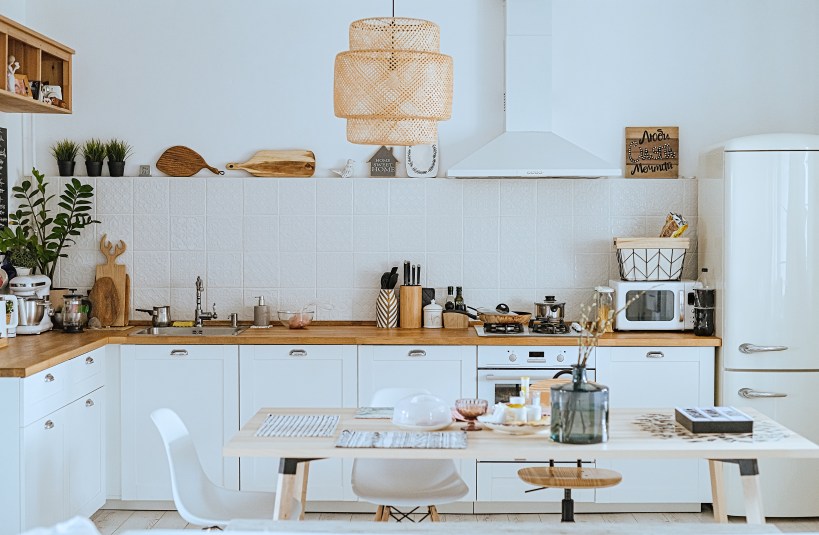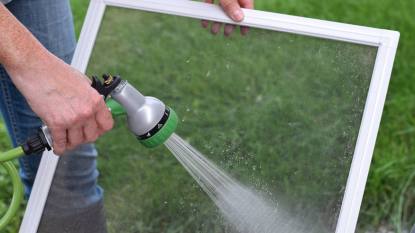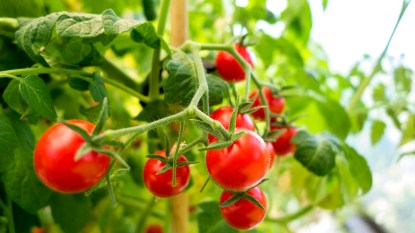10 Things You Need in Your Kitchen at All Times

Julia Busuttil Nishimura is a Melbourne-based cook, author, and teacher, and a regular contributor to Country Style.
Eating simply and seasonally is at the core of Julia’s culinary creations and her latest cookbook, A Year of Simple Family Food, showcases a collection of recipes that show you how to do just that.
The dishes in this book are brought to life with great ingredients. There are plenty of quick recipes and some that require more time to cook on the stove. Overall, they are linked by taste and pleasure and making the most of seasonal produce and pantry staples.
To celebrate the launch of her latest cookbook, we asked Julia to share 10 things she has in her kitchen at all times to ensure she is always prepared to whip up something delicious for her family.
Kitchen Staples
A Good Kitchen Knife — This is something you are going to be using every day so it’s worth investing in a good one. Buy from a specialist who knows what they’re talking about and learn how to sharpen it to keep it in its best condition. I have a range of knives I bought in Japan which I take meticulous care of, some are eight years old and still like-new.
Zester — A few zesters are a must-have in my kitchen. They are my go-to for grating citrus zest, nutmeg, cheese, chocolate, garlic with ease.
Stand Mixer — I absolutely love my stand mixer. From whipping egg whites for meringues to kneading dough for brioche and pizza, my mixer is the true workhorse of my kitchen and permanently lives on my kitchen bench.
Rice Cooker — We eat a lot of rice in our home so a good rice cooker is very important. We have opted for a traditional Japanese ceramic stove-top rice cooker and I swear the rice tastes better when cooked in it. It also happens to look really beautiful and is a lovely feature in the kitchen.
Digital Scales — I do a lot of baking for my columns and books so a good set of digital kitchen scales are a must-have. They are far more accurate than cup measurements so I rely on them heavily when it comes to writing recipes.
Pantry Staples
A Good Quality EVOO — I alternate between local olive oil and ones from Italy to make sure it is as fresh as possible and as close to the pressing date as I can get. Olive oil doesn’t get better with age so fresh is always best, look for pressing dates on the bottle as a guide. I use it in cakes, pastry, dressings and of course cooking.
Canned Tomatoes — Canned and jarred tomatoes are always aplenty in my pantry and form the basis to so many of my meals, from tomato-poached fish with saffron to cavatelli with sausage and cavolo nero, this staple is something I always have on hand. I love the San Marzano variety of tomatoes and although not as easy to come by, are well worth seeking out for flavor and brightness.
Anchovies — They often get a bad rap for being overly salty but buy good quality anchovy fillets in tins and you will be pleasantly surprised just how subtle they can be. I use them at the beginning of cooking, just a few dissolved in warm oil, to add complex saltiness, on fresh sourdough with butter or as the star in a tart like my pissalidière where they contrast with the sweet onions beautifully.
Dried Pasta — Pasta of all shapes and kinds is another ingredient that is forever in my pantry. I have particular brands I turn to, particularly from Gragnano on the Amalfi coast. Whether it is bucatini to go with an amatriciana sauce or rigatoni to be served with a lamb ragù, dried pasta is an essential pantry ingredient.
Dried Legumes — From chickpeas, beans to lentils, I love their versatility. Dried legumes are also extremely cost-effective and just require a little planning. Whether it is my maple carrot salad with lentils or bean, tomato, and rocket pasta, they are perfect for all year round cooking. Just be mindful, the older the bean, the longer it will take to cook, so try and buy ones that are from that year’s harvest.
This article originally appeared on our sister site, Homes to Love.













